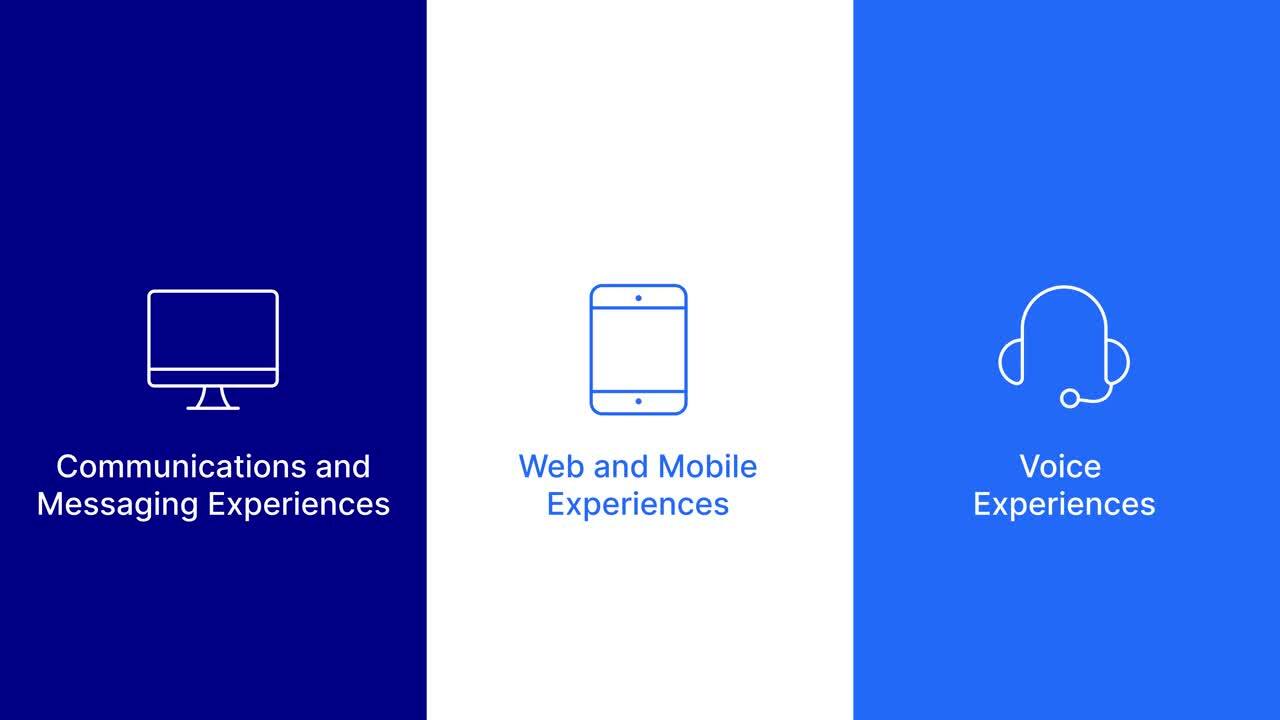Smarter total experience
Deliver the unexpected: Improve confidence, satisfaction, loyalty, and advocacy throughout all employee and customer digital experiences

Provide engaging customer journeys

Buying habits and expectations have changed. Customers and employees today want quick access to all the information they need. Organizations that can connect that information and provide smooth employee and customer journeys through total experience (TX) gain an advantage. Yet, many organizations still maintain disparate systems and departmental silos that lead to disjointed, overly complex and frustrating experiences.
Give customers and employees new reasons to engage and stay loyal with relevant, total digital experiences that are frictionless, omnichannel, data-driven and highly personalized.
Total experience by industry
Find out how delivering the total experience helps organizations overcome specific industry challenges, work smarter and race ahead of the competition.





Shift to total experiences
Companies today struggle with a cross-functional dilemma fueled by silos and systems. Marketers want to generate demand, build brand value, and drive conversions. Operations, customer service, and other support teams strive to streamline transactions, communicate clearly, and manage compliance complexity. A total experience (TX) strategy brings all departments together with customers in a shared digital experience.
-
Customer communications to customer experiences
65% of consumers say most companies they do business with need to improve their customer experience[1], making it a top focus for executive leadership. Organizations need to eliminate silos and accelerate digital transformation to enable the shift from customer communications to customer experiences.
-
Transactional to relevant experiences
71% of consumers expect personalization and 76% get frustrated when they do not find it[2]. To achieve higher conversion rates and stand out amid content overload, organizations need to eliminate irrelevant communications and move from transactional to relevant experiences.
-
Multi-channel to omnichannel
Organizations that adopt a true omnichannel strategy achieve 41% faster revenue growth[3], increasing the need for a targeted communication approach. Organizations need to orchestrate complete, seamless customer journeys across all channels, interactions and touchpoints to advance from multi-channel to omnichannel.
-
One-way to two-way conversations
75% of customers expect to receive excellent or good service[4], leading companies to refocus on listening to their customers’ needs. To truly understand the customer and enhance decision making, increase empathy and improve service, organizations must shift from one-way communications to two-way conversations.
-
EX and CX to TX
According to Gartner®, “The top two reasons for pursuing digital initiatives are to enhance customer experience (58%) and improve employee productivity (57%), which should not be pursued in silos[5], spurring a move towards unified systems. Organizations need to automate and optimize operations, reduce costs and increase loyalty and retention with a total experience (TX) strategy for creating shared customer and employee experiences.
Evolve and modernize to improve digital experiences
Move from paper to digital, from multi-channel to omnichannel and from transactional to relevant customer and employee experiences to maximize acquisition-to-retention.
-
Evolve to customer experiences
Research shows that customer experience leaders grow revenue faster than laggards, cut costs, reduce risk and can charge more for their products. Integrate communications, messaging, data insights and information into a single platform to deliver consistent, engaging and relevant customer journeys and experiences.
-
Modernize employee experiences
Customers expect seamless, frictionless digital experiences. Employees want to resolve customer issues quickly and easily. Meet the needs of both with a single, cloud-based platform that works across all departments, channels and touchpoints, eliminating silos, automating and digitizing processes and optimizing employee experiences for greater efficiency.
Learn the top 5 benefits of communication-centric experiences
Digital experience experts
Learn how leading companies have created total digital experiences to meet today’s expectations.
See more success storiesMore total experience resources
4 tips for tracking customer experience KPIs
Read the blogSeven standouts in citizen experience
Read the eBookHow can we help?
Footnotes
Footnotes
- [1]Broadridge, 2022 CX & Communications Insights, 2022
- [2]McKinsey & Company, The value of getting personalization right—or wrong—is multiplying, Nov. 2021
- [3]Aspire, The Future State of Omni-channel Customer Communications (Part 1), Nov. 2021
- [4]IDC, IT QuickPoll – Digital Communications Survey, Oct. 2021
- [5]Gartner®, Top Strategic Technology Trends for 2022: Total Experience, Jason Wong, Michelle Duerst, Don Scheibenreif, Saul Brand, Michael Chiu, Van Baker, 18 Oct. 2021
GARTNER is a registered trademark and service mark of Gartner, Inc. and/or its affiliates in the U.S. and internationally and is used herein with permission. All rights reserved.

.png)


